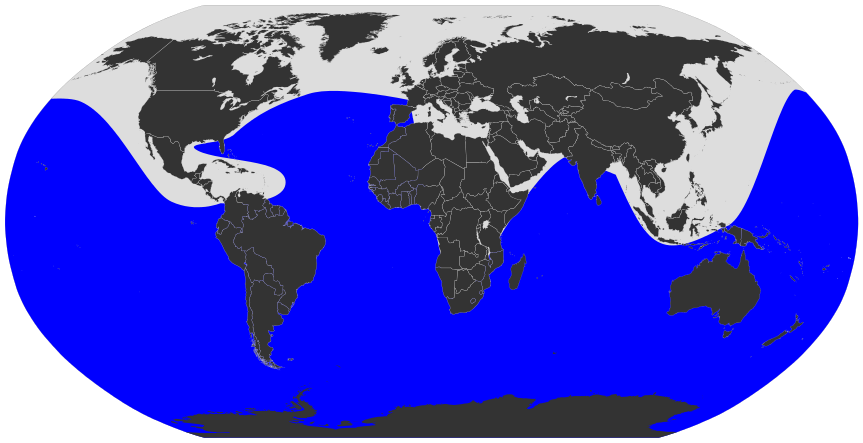Taxonomy
Showing the pale band on the upper wing secondary coverts
The name Mother Carey's chicken was used in early literature and often applied to several petrel species while the generic name of stormy petrel referred to the idea that their appearance foretold stormy weather. Some authors called it the yellow-webbed storm-petrel.[6]
Description
The yellow webbing to the feet is distinctive
Distribution and habitat
This species breeds on the Antarctic coastlines and nearby islands such as the South Shetland Islands during the summer of the southern hemisphere. It spends the rest of the year at sea, and moves into the northern oceans in the southern hemisphere's winter. It is much more common in the north Atlantic than the Pacific. Wilson's storm petrel is common off eastern North America in the northern summer and the seasonal abundance of this bird in suitable European waters has been revealed through pelagic boat trips, most notably in the area of the Isles of Scilly and Great Britain.It is strictly pelagic outside the breeding season, and this, together with its remote breeding sites, makes Wilson's petrel a difficult bird to see from land. Only in severe storms might this species be pushed into headlands.
Behaviour and ecology
Wilson's storm petrel has a more direct gliding flight than other small petrels, and like most others it flies low over the seas surface and has the habit of pattering on the water surface as it picks planktonic food items from the ocean surface. Their unique fluttering and hovering flight is achieved often with their wings held high. Even in calm weather, they can make use of the slight breeze produced by the waves and in effect soar while using their feet to stabilize themselves.[10] Like the European storm petrel, it is highly gregarious, and will also follow ships and fishing boats. A soft peeping noise is often heard while the birds are feeding. They feed predominantly on planktonic invertebrates close to the surface, rarely plunging below the surface to capture prey. They may however sometimes take 3–8 cm long fish in the family Myctophidae.[11]At 40 g on average, it is the smallest warm-blooded animal that breeds in the Antarctic region.[12] It nests in colonies close to the sea in rock crevices or small burrows in soft earth and lays a single white egg. Like most petrels, its walking ability is limited to a short shuffle to the burrow. In the Antarctic, nests may sometimes get snowed over leading to destruction of the nest or chicks. This storm petrel is strictly nocturnal at the breeding sites to avoid predation by gulls and skuas, and will even avoid coming to land on clear moonlit nights. Both parents tend the nest and feed the single chick.[13] The chicks call and beg for food, more vigorously when hungry.[14] Chicks remain at nest for about 60 days and are fed on krill, fish and amphipods.[15] Adults have the ability to identify their nest burrows[16] in the dark and their mates by olfactory cues.[17]
Widespread throughout its large range, Wilson's storm petrel is evaluated as least concern on the IUCN Red List of Threatened Species.[1]
Distribution range (blue)




No comments:
Post a Comment
Note: Only a member of this blog may post a comment.